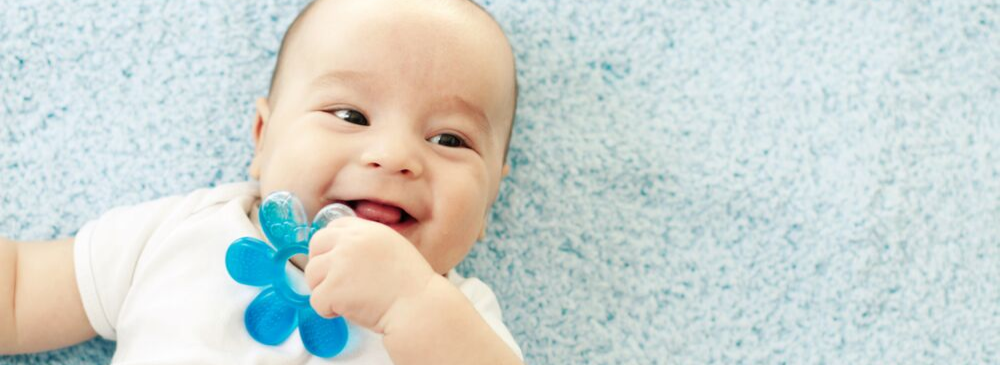Has your baby been irritable, fussy, or unable to sleep? Are they drooling excessively and chewing anything they can get their hands on? If so, it’s possible your baby is teething.
What is teething?
Babies are born with all 20 fully formed baby teeth (also called “first teeth” or “milk teeth”) under their gums. The process of a baby’s first teeth erupting through the gums is called “teething.”
Typically, the top and bottom front teeth are the first to emerge from the gums, followed by lateral incisors, first molars, canines, and second molars.
When do babies start teething?
Teething in infants usually starts between the ages of two and 12 months. However, it can take up to two years for all 20 baby teeth to emerge.
As a tooth begins to cut through the gums, it can cause oral pain and soreness. Not all babies show signs of discomfort during this process. But temporary symptoms of teething can begin as early as four days prior to the appearance of a new tooth and can last up to three days after the tooth has emerged.
Ready to Buy Dental Insurance?
This article is very high-level information. We recommend you always review plan details and get a quote before you purchase a dental insurance plan. We offer 5 plans with different coverage and monthly premiums.
How do you know if your baby is teething?
While not all teething infants exhibit identical signs of tender gums, there are a number of teething symptoms that may include:
Increased drooling, biting, sucking or gum rubbing
Decreased appetite
Difficulty sleeping
Irritability
Elevated body temperature
Temporary teething symptoms don’t require treatment. However, while some infants may experience a slight increase in body temperature during the teething process, a persistent fever can be a symptom of a serious infection and should be treated by a healthcare provider.
How can you ease teething pain?
There are several ways to help children alleviate teething pain and gum soreness.
Teething rings — The pressure provided by chewing can help alleviate discomfort. Teething rings provide a clean and safe item on which your infant can chew.
Cool the area — The cold feeling of a chilled washcloth, teething ring, or a spoon can help soothe irritated gums.
Rub the area — Using a clean finger and a moistened gauze pad, you can rub your baby’s gums gently. Much like teething rings, the pressure can help ease gum discomfort.
Teething gels — Teething gels with benzocaine are considered unsafe for children under the age of two. Consult a healthcare professional before using teething gels containing benzocaine.
Want more information about teething?
If you have questions about teething and overall health, ask your dentist. They’re happy to explain the process and provide advice.
Don’t have a dentist? Create or sign in to your MySmile® account to search for an in-network dentist near you.
Sources
Eric, J., et al. What are pharmacists recommending for infant teething treatment? Journal of the American Pharmacists Association. 2018. 58(1):79-83.el.
Mackinin ML, Piedmonte M, Jacobs J, Skibinsky C. Symptoms Associated With Infant Teething: A Prospective Study. AAP News and Journals Gateway. 2000. 105(4)
Wake M, Hesketh K. Teething symptoms: cross sectional survey of five groups of child health professionals. BMJ. 2002;325:814. (12 October.)












